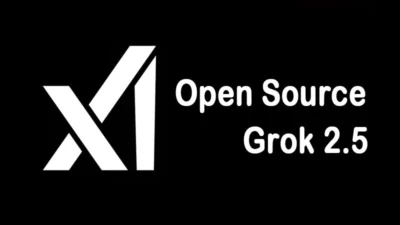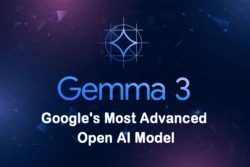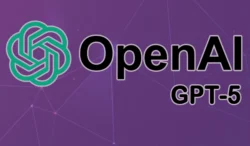
SAN FRANCISCO - Aug 24, 2025 (UTC) - In a significant development for the artificial intelligence sector, Elon Musk’s xAI has released the model weights for its Grok 2.5 AI system as open source, making the technology freely available to researchers, developers, and AI enthusiasts worldwide through the Hugging Face platform. The move positions xAI as a major advocate for open AI development, contrasting with the largely proprietary approaches of competitors like OpenAI and Google. This strategic decision could accelerate innovation in the AI community while raising questions about licensing restrictions and competitive implications. The release comes with promises of future open-source releases, including Grok 3 within six months, signaling a broader commitment to democratizing advanced AI technology.
Major Open Source Release
Musk announced on X that “The @xAI Grok 2.5 model, which was our best model last year, is now open source”, marking a pivotal moment in the company’s approach to AI development and distribution. The move represents a shift toward greater transparency and collaboration in the competitive AI landscape.
xAI announced today that it has open-sourced its Grok 2.5 model, making it available for researchers and developers to study and build upon. The release includes the complete model weights that were used to shape Grok 2.5, allowing users to download, modify, and build upon the technology.
Future Commitments and Timeline
In addition to the current release, Musk has made commitments for future open-source initiatives. He added that Grok 3 “will be made open source in about 6 months”, signaling xAI’s continued dedication to open-source development practices.
Grok 3, which was released earlier this year, will follow the same open source path in about 6 months, providing the AI community with access to even more advanced capabilities in the near future.
Technical Capabilities and Features
Grok 2.5 is a large language model that can answer questions, generate text and do complex reasoning. The model represents a significant advancement from its predecessors, offering enhanced capabilities for various AI applications.
Unlike Grok 1 which xAI released as a raw base model in March 2024, Grok 2.5 comes with a richer feature set, making it more practical for developers looking to integrate advanced AI capabilities into their applications.
Strategic Motivations Behind Open Sourcing
Mr. Musk stated that this step is to encourage researchers, programmers and the global artificial intelligence (AI) enthusiast community to participate in exploring, developing and expanding the capabilities of this platform. This approach aligns with xAI’s broader mission to democratize AI technology.
The decision to open-source Grok 2.5 appears to be driven by multiple strategic considerations:
- Talent Attraction: The move aims to attract talent, foster ecosystem growth, and accelerate innovation through collaborative development
- Community Building: Encouraging broader participation in AI development and research
- Competitive Positioning: Establishing xAI as a leader in open AI development
- Innovation Acceleration: Leveraging collective intelligence to improve AI capabilities
Licensing Concerns and Restrictions
However, the open-source release comes with certain caveats that have drawn attention from the AI community. AI engineer Tim Kellogg described the Grok license as “custom with some anti-competitive terms”, raising questions about the true openness of the release.
Critics and AI engineers have pointed out that while the model is open, its license includes “anti-competitive terms,” as described by AI engineer Tim Kellogg. This raises questions about the extent to which developers can freely use and modify the technology.
Critics highlight restrictive licensing terms that may limit certain commercial applications or competitive uses of the technology, potentially dampening some of the enthusiasm around the open-source announcement.
Technical Access and Implementation
The model is now available through Hugging Face, one of the most popular platforms for AI model distribution. Effective immediately, the source code is available for anyone to see, download and use via Hugging Face.
This repository contains the weights of Grok 2, a model trained and used at xAI in 2024, providing developers with access to the core components needed to implement and modify the AI system.
The release enables developers to:
- Download complete model weights
- Modify and fine-tune the model for specific applications
- Study the architecture and training methodologies
- Build upon the technology for research and commercial purposes (subject to licensing terms)
Context of Grok’s Controversial History
The open-source release comes against the backdrop of Grok’s controversial performance history. Grok, which is prominently featured on X (which in turn recently merged with xAI), has created considerable controversy this year, particularly after the chatbot seemed to become obsessed with “white genocide” conspiracy theories, expressed skepticism about the Holocaust’s death toll, and described itself as “MechaHitler,” leading xAI to publish its system prompts on GitHub.
And while Musk described the latest version, Grok 4, as a “maximally truth-seeking AI,” the model appears to consult Musk’s social media account before answering controversial questions, raising questions about bias and objectivity in AI responses.
Industry Impact and Implications
The decision to open-source Grok 2.5 represents a significant moment in the AI industry, particularly as major tech companies have generally kept their most advanced models proprietary. This move could pressure other AI developers to consider similar open-source strategies.
The release comes at a time when the AI industry is grappling with questions about:
- Accessibility and democratization of AI technology
- The balance between commercial interests and scientific advancement
- Regulatory oversight and safety considerations
- The concentration of AI capabilities among a few major players
Looking Ahead: Future of Open AI Development
With the promise of Grok 3’s open-source release in six months, xAI is positioning itself as a champion of open AI development. This strategy could help the company differentiate itself from competitors while building a robust ecosystem of developers and researchers around its technology.
The success of this open-source approach will likely influence how other AI companies balance proprietary development with community collaboration, potentially reshaping the competitive landscape of artificial intelligence.
What This Means for Developers and Researchers
For the AI development community, the Grok 2.5 release represents a significant opportunity to:
- Access state-of-the-art AI technology without prohibitive costs
- Contribute to the advancement of AI capabilities through collaborative development
- Study and learn from advanced AI architectures
- Build innovative applications and services on proven technology
However, developers will need to carefully review the licensing terms to understand any limitations on commercial use or competitive applications.
The coming months will reveal whether xAI’s open-source strategy successfully accelerates innovation and builds the developer ecosystem the company is seeking, or whether licensing restrictions limit its impact on the broader AI community.





